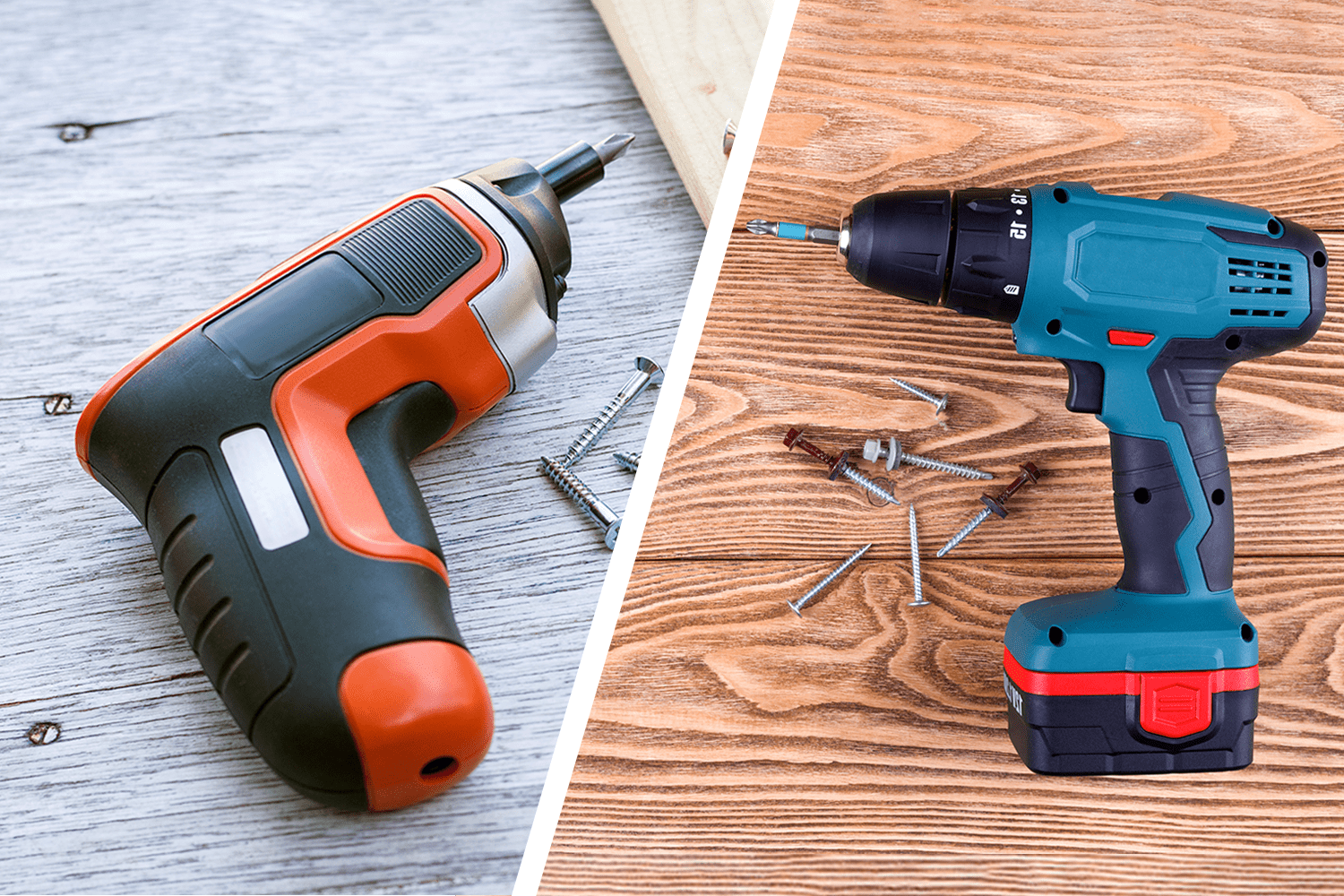Black & Decker (now Black+Decker) invented the first portable electric drill in 1917, and the first electric screwdriver in 1923. The first models were clunky and required both hands to operate. Now thanks to cordless technology, contemporary models from a variety of manufacturers are compact, lightweight tools that DIYers wouldn’t want to be without.
Because their functions overlap, anyone who does a lot of home repair and owns a cordless drill isn’t likely to need an electric screwdriver. Look inside the toolbox of a homeowner who only does occasional repair, however, and you’re more likely to find an electric screwdriver than a drill. Why? Because it’s easier to use and takes up less space.
This doesn’t mean a dedicated DIYer would never opt for an electric screwdriver over a drill. Although the electric screwdriver is underpowered compared to a drill, its ergonomic design makes it more suitable for light-duty tasks like tightening shelf brackets and certain electrical repairs. An extensive tool collection would include both. But if you only want one, a drill is more versatile and probably the better choice. Cordless drills and drivers are some of our most-used tools, organize them better with this drill station.
What Is an Electric Screwdriver?
An electric screwdriver, as the name suggests, has one function: driving screws. Some models offer the same pistol-grip handle as a drill. Others are barrel-shaped, and still others feature handles that swivel into either position. Instead of an adjustable chuck, an electric screwdriver has a slotted drive shaft (SDS) chuck that accepts only driver bits with hexagonal shafts.
Electric screwdrivers with replaceable AA batteries were popular in the past. Today, these tools all have rechargeable batteries. The battery may be permanently installed and chargeable through a wall outlet, or it may be removable and chargeable via a separate station.
Battery voltage, which regulates driving torque and rotational speed, typically runs from four to 10 volts. Battery capacity, measured in amp-hours (a measure of how much amperage the battery can deliver in one hour), is around 1.5 Ah.
What Is a Drill?
A drill is a pistol-shaped power tool primarily for boring holes. Because its adjustable chuck accepts driver bits, it also can double as a screwdriver. Drill are corded or cordless, with cordless models comparing more closely to electric screwdrivers.
Cordless drills feature removable batteries with ratings between 12 and 24 volts and capacity from 1.0 to 4.0 Ah. The bit spins at speeds up to 2,000 revolutions per minute (rpm), and it develops more torque than an electric screwdriver (about 400 rpm). It can handle tough jobs like drilling large diameter holes, as well as light-duty tasks like driving screws.
Uses for Electric Screwdrivers and Drills
An electric screwdriver is less versatile than a cordless drill, but its design makes it more suitable in certain circumstances:
- It can drive screws in tight spaces where a drill can’t fit. Its size also makes it easier to store.
- Because it doesn’t develop as much torque as a drill, it can drive screws into soft wood without sinking the heads deep enough to split it.
- For seniors or anyone with gripping issues, it’s easier to hold and operate an electric screwdriver.
Because of the adjustable chuck and extra power, drills can be used with attachments for purposes other than boring holes and driving screws.
- Besides screw bits, drills also accept hexagonal sockets to drive hex-head bolts. You can also use a drill to bore pilot holes for large and small fasteners.
- With the proper attachment, a drill can be used as a sander, grinder or paint mixer. It can also operate a suitably equipped drain auger.
- Drills can free stuck screws and bolts and drive screws into dense materials like hardwood and masonry.
Comparing Cost
Cost shouldn’t be the driving factor in your decision about which tool to buy. On the whole, electric screwdrivers are cheaper. But a good one, like the two-speed Milwaukee 4V Cordless Screwdriver, can cost more than a high-quality cordless drill. At the low end, the 3.6V Black+Decker Cordless Screwdriver costs less than $16.
You probably won’t find a cordless drill that costs as little as the cheapest electric screwdriver, but few are as expensive as the top-end screwdrivers.
On average, cordless drills run between $50 and $100. Models that cost more are usually packaged with extras like an additional battery, a drill and driver bit set or an extra drill. You can buy a drill for less than $35 with many of the same extras, so the versatility of a drill doesn’t necessarily come with a higher price.
ⓘ





















